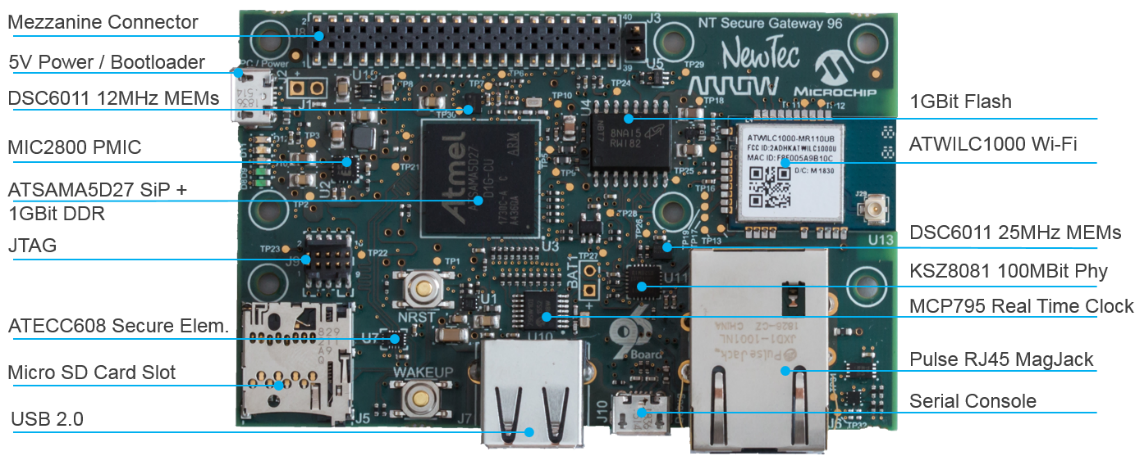Unlock the value of embedded security IP to build secure IoT products at scale
- by 7wData

IoT product development crosses several domains of expertise from embedded design to communication protocols and cloud computing. Because of this complexity “end-to-end” or “edge-to-cloud” IoT security is becoming a challenging concept in the industry. Edge in many cases refers to the device as a single element in the edge-to-cloud chain. But the device must not be regarded as a whole when security requirements are defined. Trust must first be established within the processing unit and propagated through several layers of the software stack before the device becomes a trusted end node. Securing the processor requires to properly integrate multiple layers of security and use security features implemented in hardware. Embedded security expertise and experience is required to accomplish such tasks. It is very easy to put a lot of effort on implementing security for an IoT product and in the same time missing to cover key use cases. A simpler way to narrowing down on defining the end-to-end security is to start with identifying the minimum set of business requirements.
Brand image, how a company’s customers perceive and value it, is one of the most valuable assets of any corporation. Two of the most important characteristics of an IoT device that can promote a positive brand image are: resiliency and privacy. For resiliency, this might mean adding features that increase the device’s ability to self-recover from malfunctions or cyber-attacks. For privacy, this means protecting user information and data but also the intellectual property (IP), the product invested in the product. This means that preventing exploitation through vectors such as productdevice cloning and over production becomes important. Another business driver is the overall cost of ownership for the product. Are there security related features that can drive the cost down? We include here not just operational cost but also liabilities.
In this blog, we dive deeper into solutions that support these business requirements. We will also discuss a demo we have created in collaboration with our partners Sequitur Labs and Arrow to demonstrate a commercially available approach to solving a number of several security use cases for IoT.
IoT security must start with securing the device, so that data, data collection, and information processing can be trusted. Security must be applied in layers and facilitate trust propagation from the silicon hardware root of trust (HWRoT) to the public/private cloud or the application provider back-end. Furthermore, the connected paradigm provides the opportunity to delegate access control and security monitoring in the cloud, outside of the device. Narrowing down further, device security must be rooted by enabling fundamental capabilities of the processor or system on chip and consider all three stages of the device lifecycle: inception (manufacturing, first boot), operation, and decommissioning.
In a nutshell we should consider the following layers for securing any IoT product:
These capabilities provide a foundation sufficient to fulfill the most common security requirements of any IoT product.
Embedded security features needed to build the security layers described above are available today from many silicon providers. However, software is needed to turn these into a usable framework for application developers to easily implement higher layer security use cases without the need for advanced silicon expertise.
Such software products must be architected to be easily ported to diverse silicon designs. Secondly, the software solution must work with the established IoT manufacturing process. “Turning on” embedded security features triggers changes to existing manufacturing flows to accommodate hardware testing before final firmware image can be programmed, burning fuses in the silicon in a specific order and overall handling sensitive cryptographic key material.
[Social9_Share class=”s9-widget-wrapper”]
Upcoming Events
Shift Difficult Problems Left with Graph Analysis on Streaming Data
29 April 2024
12 PM ET – 1 PM ET
Read MoreYou Might Be Interested In
Data Isn’t ‘Truth’
10 May, 2019It has become perhaps the most important guiding principle of today’s world of data science: “data is truth.” The statisticians, …
Turning Big Data from Cost to Revenue
31 Jul, 2017Big Data and the Internet of Things are currently being lauded in many industries as the new frontier for business …
A Hybrid of Quantum Computing and Machine Learning Is Spawning New Ventures
20 Jun, 2017Machine learning, the field of AI that allows Alexa and Siri to parse what you say and self-driving cars to …
Recent Jobs
Do You Want to Share Your Story?
Bring your insights on Data, Visualization, Innovation or Business Agility to our community. Let them learn from your experience.
Privacy Overview
Get the 3 STEPS
To Drive Analytics Adoption
And manage change


